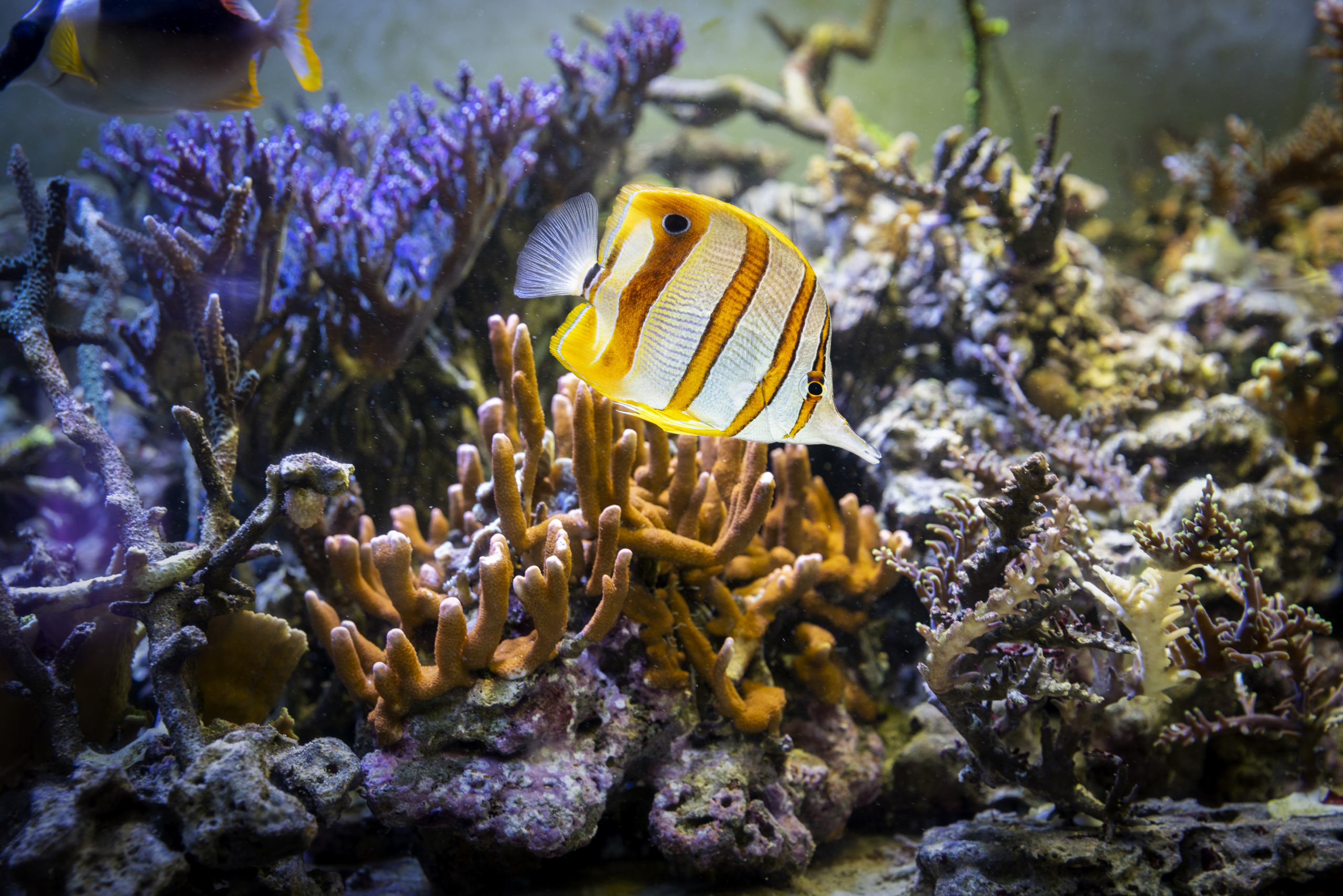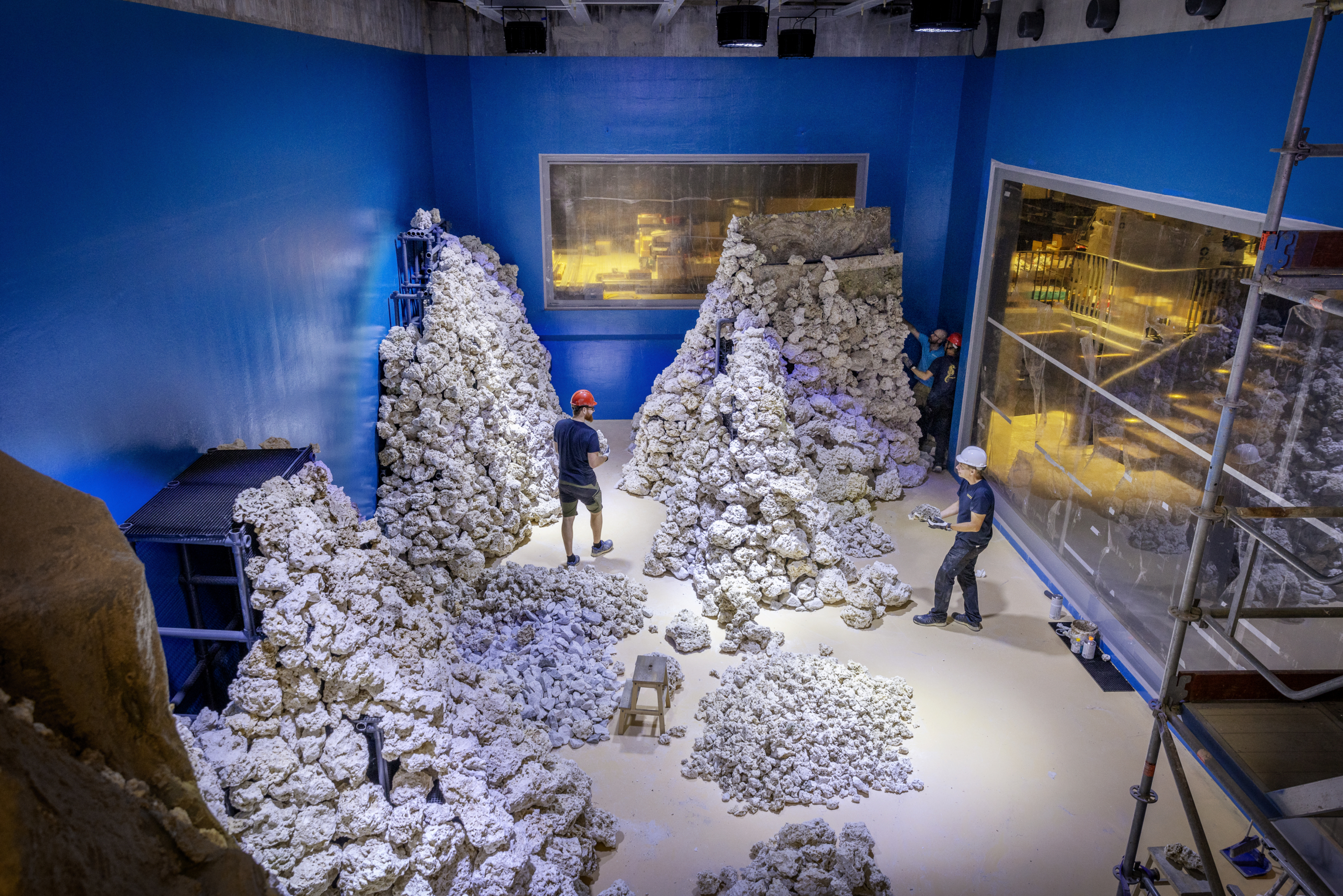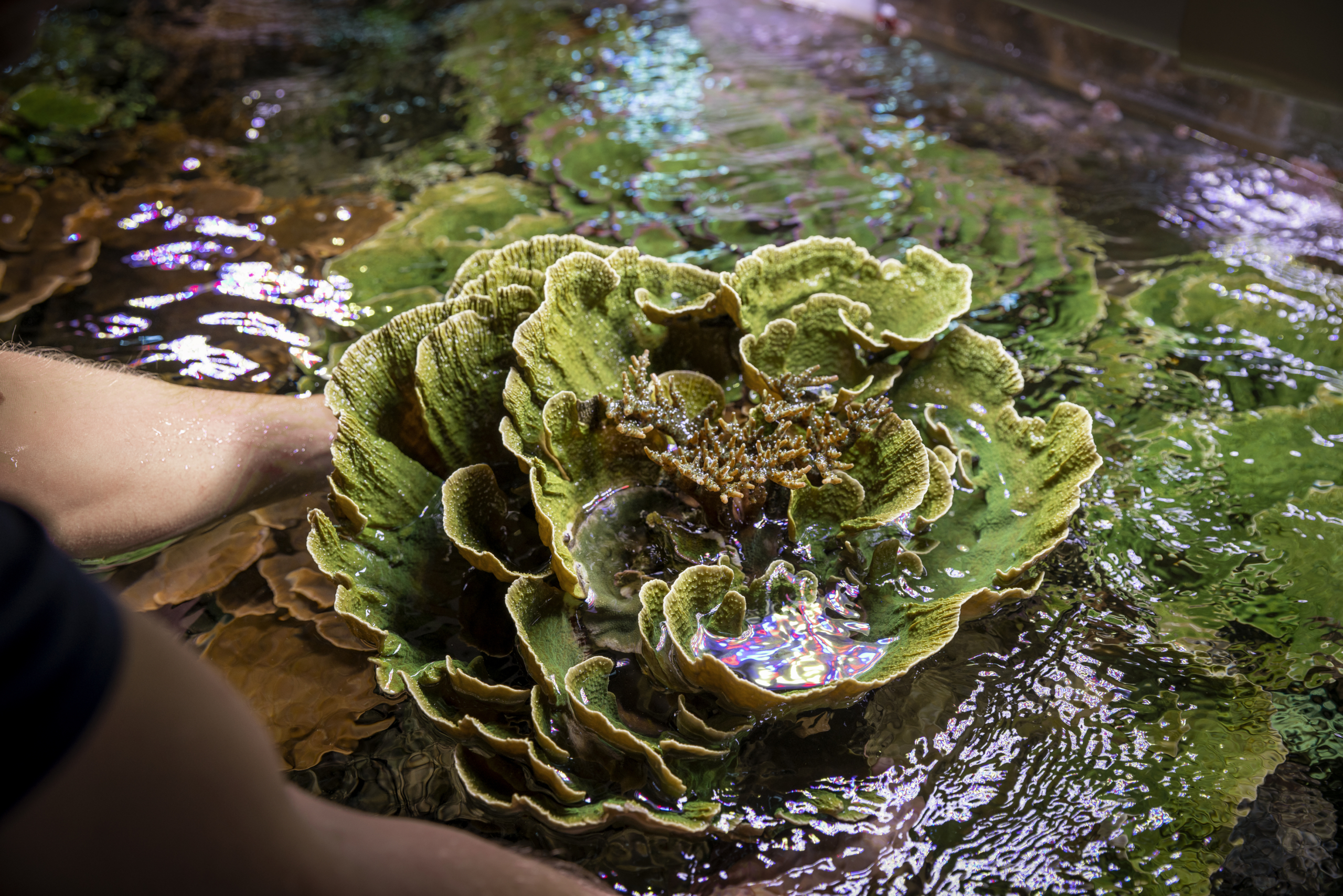Check out the new Aquarium
Dive behind the scenes and check out the highlights of the new Aquarium.
Dive behind the scenes and check out the highlights of the new Aquarium.

An underwater world focusing on the ocean. The largest collection of live corals in Europe. A public marine research laboratory and an exhibition about the importance of the sea for all life. Dive behind the scenes and check out the highlights of the new Aquarium.
“We want to take the visitor on an underwater trip all over the world. To do that, we’ll display habitats and exciting animals and fish from all over the world. From saithe and cod on the west coast to odd tropical fish, animals and corals,” says Björn Källström, Development Manager at the Aquarium.

The new Aquarium has been excavated under the ground in the park towards Karl Johansgatan and is not visible from the outside. It has twice the area and the aquariums hold ten times as much water as before. The largest aquarium, Korallhavet [the Coral Sea], holds 30 tonnes of coral stone, two tonnes of sand, just over 400,000 litres of water and a collection of living corals. Visitors can view endangered stony corals and learn how a coral reef grows over time.
The Coral Sea is not only one of the largest aquariums for living corals in Europe, it is also a research aquarium and a living gene bank. A joint database is being constructed that will connect other public coral aquariums in Europe – and in the long run the whole world.

The new Aquarium will contain fifteen aquariums displaying environments from different parts of the ocean, from cold deep-sea aquariums to warm tropical waters. In the exhibition Ocean Planet, visitors are shown how the sea functions in more detail and how vital it is for the planet we live on.“We want to spread awareness of the sea and knowledge of how we are affected by the sea and also how we ourselves are affecting the sea in the form of climate change. In the exhibition, visitors can view fossils, read, watch fun explainer films or just allow themselves to be fascinated by the habitats in our aquariums,” says marine biologist Jens Ulvås, who produced the exhibition along with his colleague Pernilla Elmtén.
Another new feature is the public experimental laboratory, Ocean lab, which will be located next to the aquarium hall, where visitors can become marine researchers for a day. Visitors and school classes will be able to conduct simple experiments and get a closer view of the research conducted in the Aquarium, such as coral and fish cultivation.
“The overall goal of the aquarium is to allow our visitors to learn more about the sea and be inspired to get involved in preserving the marine environment for future generations,” says Björn Källström.
In Korallhavet [the Coral Sea], visitors can view endangered stony corals and learn how a coral reef grows over time. This is one of Europe’s largest aquariums for live corals – and is also a living gene bank.
